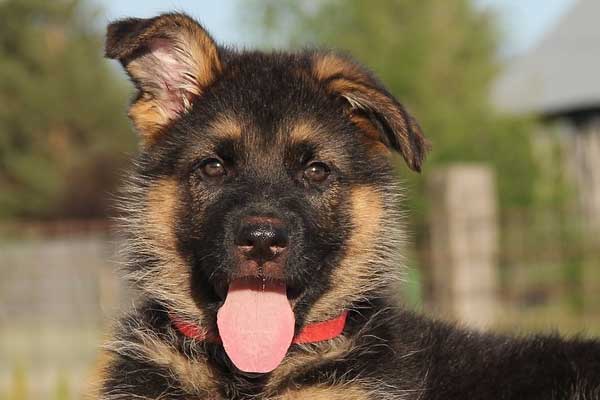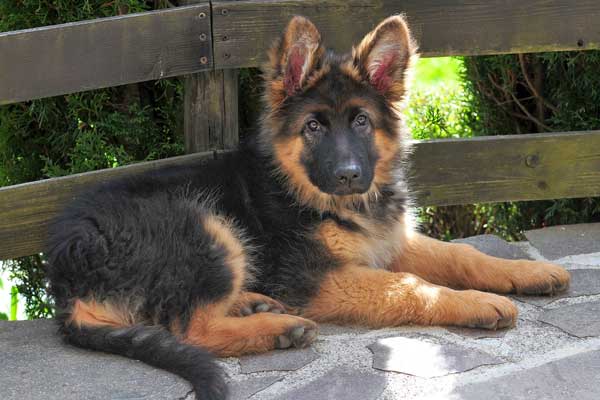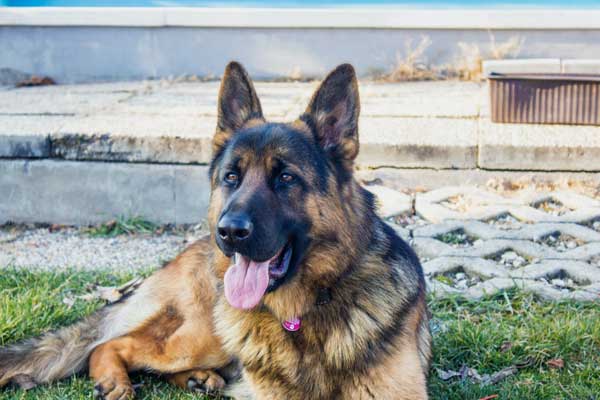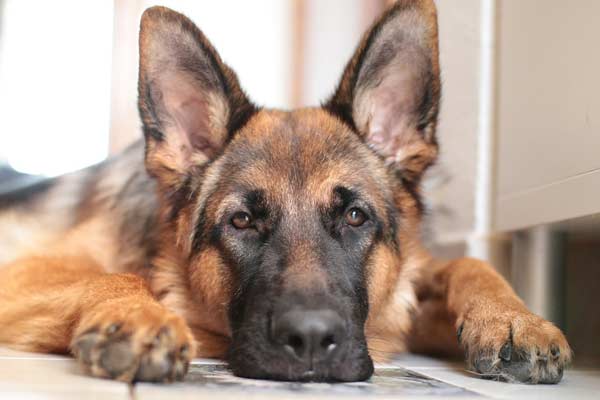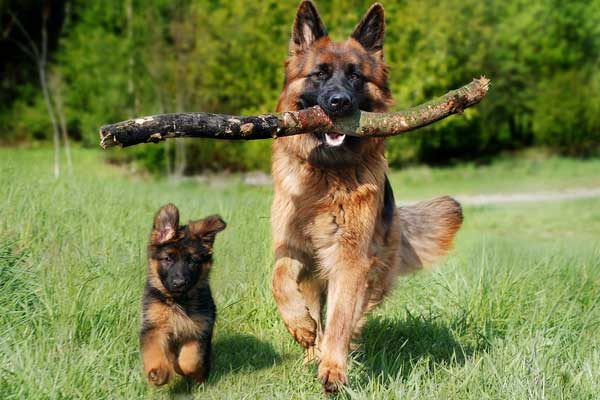German Shepherd Puppy Crate Training: The A-B-C’s of How To Do It Right!
Crate training a German Shepherd puppy can be daunting, but it doesn’t have to be. With the right amount of patience and persistence, you can successfully crate-train your pup and reap the many benefits it offers.
In this article, we’ll review the A-B-C’s of crate training a German Shepherd puppy and provide tips and tricks to help make the process as smooth as possible. So, let’s get started!
Introduction to Crate Training
Crate training is a popular way to house-train a puppy and encourage good behavior. It involves using a crate or kennel to give your puppy a safe and comfortable place to stay while you’re away.
The crate should be large enough for the puppy to move around freely but not so large that they can use one corner as a bathroom. By teaching your puppy to stay in the crate when you’re not home or can’t supervise them, you can ensure they stay out of trouble and are safe.
When done correctly, crate training is a positive experience for you and your puppy. It’s important to remember that, like all things, it takes time and patience.
Be sure to take it slow, be consistent, and reward your puppy for its excellent behavior. With the right approach, your puppy will learn to love their crate, and it will become its unique place.
Are German Shepherds hard to crate train?
German Shepherds are relatively easy to crate train. These intelligent dogs can learn quickly, and patience and consistency can be a positive experience for you and your pup. It’s important to remember that all dogs learn at their own pace, so keep going if it takes longer than expected.
When your dog responds appropriately, provide plenty of positive reinforcement, and ensure the crate is comfortable. With the right approach, your pup will learn to love their crate, and it will become their special place.
How Long Does It Take Crate-Train a German Shepherd?
German Shepherds are brilliant dogs, making them easy to train. With patience and consistency, crate training can be a positive experience for you and your pup.
Positive reinforcement is critical when your puppy responds appropriately, and ensuring the crate is comfortable is essential. With the right approach, your German Shepherd can learn to love their crate in as little as a month.
Benefits of Crate Training a German Shepherd Puppy
There are many benefits to crate training a German Shepherd puppy. For starters, it can help with potty training. When your puppy is in the crate, they’ll learn to “hold it” until they’re let out. This not only helps to keep your house cleaner, but it also prevents accidents and sets the stage for successful potty training.
Crate training can also help to keep your puppy safe. When in the crate, they’re less likely to get into things they shouldn’t, like chewing on furniture or getting into the trash. It’s also a great way to keep them from running off or getting into trouble when you’re not home to supervise.
Finally, crate training can help reduce your puppy’s anxiety and stress. By learning to stay in the crate for short periods, your puppy will be more comfortable in their own space and learn to relax when alone.
Preparing for Crate Training
Before you start crate training your German Shepherd puppy, you should do a few things to ensure they’re comfortable and safe.
First, make sure the crate is the right size. It should be big enough for the puppy to stand up and turn around in, but not so big that they can use one corner as a bathroom.
Next, make sure the crate is comfortable. Add a soft bed or blanket for them to lay on, and ensure enough room for them to move around. Also, add a few toys to keep them entertained. This will make them more comfortable in the crate and help to keep them from getting bored.
Finally, make sure the crate is in a quiet, out-of-the-way area. This will help your puppy feel safe and secure in their crate, and it will also help to reduce distractions.
How many hours a day should a puppy be crate trained?
A puppy should not be in its crate for more than three or four hours at a time if it is under the age of 6 months. This is because puppies this young cannot control their bladders or bowels for long periods. The same goes for adult dogs that are being trained.
It is best to keep your dog in its crate until they have developed the ability to stay alone in the house without having accidents or exhibiting destructive behaviors, which is a common behavior problem. A comfortable and quiet environment will help your puppy feel safe and secure in their crate.
Step-by-Step Guide to Crate Training a German Shepherd Puppy
Now that you’ve prepared the crate, it’s time to start the actual crate training. Here’s a step-by-step guide to help get you started:
Establishing the Crate
The first step to crate training your German Shepherd puppy is establishing the crate as a safe and comfortable place. Start by introducing them to the crate and rewarding them for being calm.
You can do this by putting treats or toys in the crate or praising them whenever they go near it. Eventually, your puppy will associate the crate with positive experiences and feel more comfortable.
Introducing the Crate
Once your puppy is comfortable with the crate, it’s time to start teaching them to stay in it. Start by asking them to enter the crate and then rewarding them.
Once inside, please give them a treat or toy and close the crate door. Please open the door after a few seconds and reward them again.
Continue this process, gradually increasing the amount of time they’re in the crate. You can start leaving the room when they’re comfortable staying in the crate for a few minutes. Eventually, they’ll learn to stay in the crate even when you’re not around.
Making Crate Time Positive
When crate training your German Shepherd puppy, it’s crucial to ensure they associate the crate with positive experiences. Whenever they’re in the crate, make sure to give them praise and rewards. You can also give them treats or toys to keep them occupied.
It’s also essential to ensure they don’t associate the crate with punishment. Never use the crate as a punishment; don’t force them to stay in it if they don’t want to. This will only make them anxious and stressed.
Common Mistakes to Avoid
When crate training a German Shepherd puppy, there are a few common mistakes to avoid.
First, don’t let them out of the crate when they’re whining or barking. This will only reinforce the behavior and make them think they’re being rewarded for it.
Second, leave them in the crate for a short time. Puppies can’t “hold it” for too long, so take them out every few hours to go to the bathroom.
Finally, please don’t give them too much freedom too quickly. Start by keeping them in the crate when you’re not home or can’t supervise them, and gradually increase their freedom.
Tips for Crate Training a German Shepherd Puppy
Crate training a German Shepherd puppy doesn’t have to be a stressful experience. Here are a few tips to help make the process easier:
- Take it slow. Crate training takes time and patience, so don’t expect your puppy to learn everything overnight. Start with short increments of time in the crate and gradually increase it.
- Make it positive. Make sure your puppy associates the crate with positive experiences. Give them treats and praise whenever they go in the crate, and avoid using it as a punishment.
- Be consistent. Consistency is critical when it comes to crate training. Ensure you’re consistent with your expectations and rewards, and your puppy will learn quickly.
- Give them freedom. Give your puppy a little freedom. Start by keeping them in the crate when you’re not home or can’t supervise them, and gradually increase their freedom.
Conclusion
Crate training a German Shepherd puppy can be daunting, but it doesn’t have to be. With the right amount of patience and persistence, you can successfully crate train your pup and reap the many benefits it offers.
Following the A-B-C’s of crate training and the tips in this article, you’ll be well on your way to a well-behaved pup!
Remember, crate training takes time and patience. Be consistent with your expectations and rewards; your puppy will learn quickly. With the right approach, your puppy will learn to love their crate, and it will become its exceptional place. So, what are you waiting for? Get started on crate training your German Shepherd puppy today!
If you’re looking for more tips and tricks on crate training a German Shepherd puppy, check out our blog for more great content!

